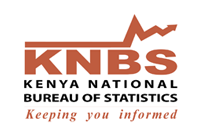The history of census undertaking in Kenya dates back to 1948 when the first population census was carried out. The subsequent censuses were undertaken in 1962, 1969, 1979, 1989, 1999 and 2009. From 1969 to date, the censuses have been conducted after every ten years. The last of these decennial censuses was held in 2009.
The collection of social economic statistics in Kenya and conducting of national censuses is carried out under the Statistics Act, 2006 of the country’s laws. Kenya National Bureau of Statistics (KNBS) is mandated to be the official custodian of all the statistical information in the country and is therefore the organization charged with the responsibility of carrying out censuses and sample surveys.
The importance of the census cannot be overemphasized, especially in the new devolved governance system that has two levels of governments. As per the Constitution of Kenya, 2010, there are 47 counties whose size and boundaries are based on the former 47 legally recognized districts of Kenya. One of the census preparatory activities is cartographic mapping, which is the delineation of the country into counting units, also known as Enumeration Areas, for use during census enumeration. Specifically, this helps in determining the personnel, materials and logistical requirements (budgeting). In the 2020 round of Population and Housing Censuses, the UN recommends that countries conducting census make use of new technology in getting up to date databases of geographic boundaries. This is achieved by use of mobile devices, remote sensing products such as satellite imageries and aerial photographs and use of Geographical Information System (GIS) in data collection and map production. A census map is prepared for each sub-location and it contains all the Enumeration Areas (EAs) within the sub-location.
Maps have proved to be indispensable products in conducting population censuses since they will ensure completeness of the coverage throughout the country and eliminate the possibility of double coverage of the population. Maps will also:
a) Facilitate in assigning areas of counting to enumerators during the census
b) Enable the enumerators to plan their movement within the EA and identify households earmarked for call-backs especially in the urban areas
c) Enable effective supervision
e) Help in presenting the results of a census.
Having drawn from the experiences of the 2009 census, there is great optimism that the current cartographic mapping for 2019 census will be fully achieved using the GIS and the output products will be of much higher quality. Towards this end, the Kenyan government with the support of the development partners has continued to provide resources to support the project and make it a success.
Status of census cartographic mapping
The Government of Kenya has recognized the fact that census cartographic mapping is a key activity, which if properly implemented ensures the success of census enumeration. Measures have therefore been put in place to enable a successful completion of the exercise. Cartographic mapping started in 2016 and is still on going with thirty- nine (39) counties fully mapped, mapping on-going in four (4) counties and four (4) pending as indicated on the map below.
A pilot census was conducted in August 2018, in selected sub-locations in the following 12 counties; Kwale, Kilifi, Makueni, Nairobi, Nyeri, Tharaka Nithi, Mandera, Kericho, Busia, Kisumu, Kisii and West Pokot. This was used to test the preparedness of the Bureau in undertaking the census and to test the use of the new technology and the applicability of the maps.
We therefore call on Kenyans to cooperate with the teams undertaking the ongoing preparatory activities for the census to enable us to collect the information that will improve your livelihood and make the national and county governments more responsive to your needs. As you are aware, accurate data is necessary for making evidence-based decisions.
